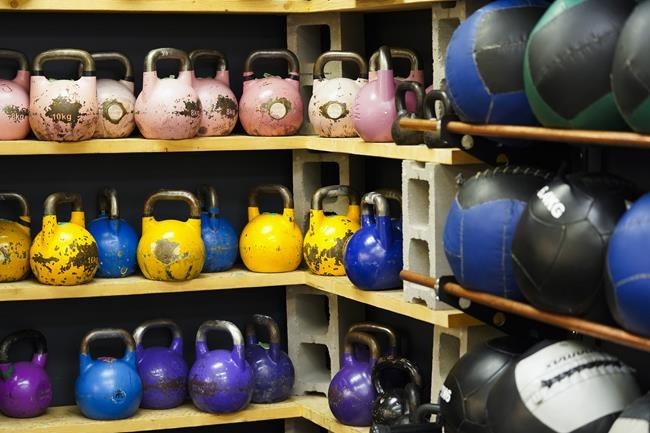When local gyms closed during the COVID-19 pandemic, Jenny Felice turned to free fitness apps and purchased a pair of roller skates, a weighted skipping rope, resistance bands, and a few used fitness DVDs.
As Felice, a 36-year-old marketing specialist in Kitchener, Ont., progressed through her routines, she eventually purchased hand weights and a set of kettle bells. She now alternates between yoga, high-intensity interval training, Zumba, skipping and roller skating when weather permits.
Felice is part of a wave of fitness enthusiasts who have decided not to return to the gym as pandemic measures are lifted across the country.
“I have found more advantages than disadvantages to working out at home versus the gym,” she said. “I’ve been able to establish a regular routine and it’s a lot easier to commit to a workout when it doesn’t require having to figure out what to wear to the gym or if I’ll be judged for my appearance or fitness level because I’m now working out in the comfort of my own home.”
Felice did acknowledge that she’ll never be able to have the same amount of equipment that a gym offers. “Regardless, I’ve been able to learn how to use my own body weight and simple inexpensive equipment,” she said.
In the past, Felice would spend $40 a month on a gym membership and up to $100 a month for a yoga membership. By working out from home, she’s saving up to $1,680 a year.
“I spent a small amount of money on my own equipment, but my workplace has a wellness account that reimbursed 50 per cent of those fitness-related costs. Those savings have been helpful in paying down debt and establishing savings during the pandemic,” Felice said.
“Even more than financial cost, the time savings is most valuable to me. Going to the gym in the past has always been about a 2-hour ordeal. I would prefer to keep up with at-home fitness now and would only want to pay membership fees for a gym that offers virtual classes through Zoom or something similar.”
Likewise, Alexandra Bosanac, a 34-year-old Toronto-based content marketing manager, said she’s unlikely to return to the gym.
“Before creating an at-home routine, I thought that the gym was my only option for getting exercise," she said.
One of Bosanac’s ongoing obstacles at the gym, and particularly in fitness classes, was that previous injuries prevented her from doing certain moves. “I really feel like going to the gym and being part of that culture really led me to have unrealistic standards for myself,” Bosanac said.
“But, now that I’m working out at home and it’s tailored, I’m able to find routines and activities I enjoy and that are truly at my level.”
While Bosanac no longer pays $500 a year for gym access, she did spend money on some used weights and a stepper. She also pays $7 a month for an app that offers body weight exercises and watches free fitness classes on YouTube. After those expenses, she saves about $350 to $400 a year.
“It’s liberating in a way to know that I can devise a sustainable workout, both physically and financially. It’s been empowering that I don’t need to spend my money on memberships to get my needs met.”
The pandemic forced people to find creative solutions , said Simone Samuels, a Toronto-based personal trainer and group fitness instructor who also offers virtual services.
“If at-home workouts are done safely and effectively, there can be less barriers and less excuses to working out,” Samuels said. For example, exercisers creating their own at-home solutions can sometimes save money on gas and gym clothes, in addition to their memberships, and time spent commuting.
Aside from cost, working at home can feel much more accessible to people with marginalized identities, particularly those who are living with a disability, plus-sized, BIPOC or LGBTQ, she added.
"[My] clientele is often clientele who don’t feel comfortable in typical gym spaces and with typical gym instructors. There’s a kind of hyper-visibility when you are in fitness spaces and have a marginalized body. Working out from home . . . can be less abrasive.”
However, there can be limitations to working from home. For those interested in bodybuilding or just heavy weightlifting, it’s harder to find at-home solutions for lifting 25 pounds and above, Samuels said.
And, it’s not always a cost savings if you’re interested in buying expensive equipment, she added. For instance, there’s a difference between buying a set of weights and turning a garage into a home gym.
People interested in creating a home gym setup should start with barbells and resistance bands, Samuel recommended. The latter are cost effective, lightweight and don’t take up any space.
People can also look to their own environment for lifting items like laundry detergent jugs they can fill with water or rocks. Many people are also using parks and playgrounds right now to do exercises like pullups.
“There’s also a lot you can do with your body weight,” Samuels said.
This report by The Canadian Press was first published August 17, 2021.
Leah Golob, The Canadian Press




